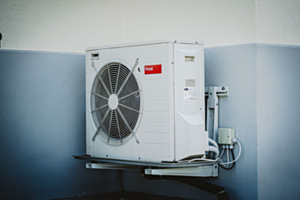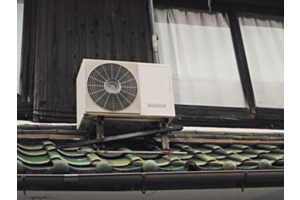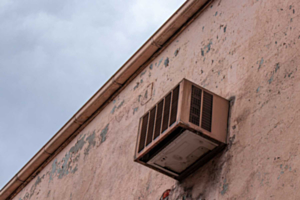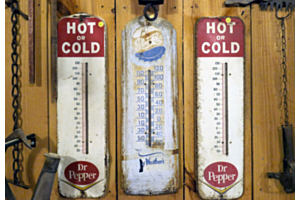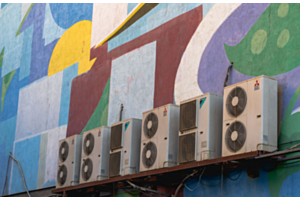Blog
-
September 21, 2022
In the summer, you greatly enjoy taking some of the rooms where your central air conditioner doesn’t cool well and making them iceboxes via window air conditioner units. However, the worst part about owning a window AC is draining the condensate.
After reviewing your spending on your utility bills, you realize that your current heating and cooling solutions are costing you a lot of money.
You’ve been thinking of making the switch to a ductless mini split system for a few years now, and now might be as good a time as any to do it. However, before you do, you have to know if you’re going to have to drain a mini split all the time.
Mini splits, like many types of cooling solutions, will indeed produce condensate that has to drain.
So how does a mini split drain, you ask? It has its own built-in condensate drain, so you needn’t buy a separate drain for your mini split system.
As the condensate drains from the mini split, it usually travels downward, such
-
September 14, 2022
You’ve had it up to here with your high energy bills month after month. You’re ready to make the switch to something more energy-efficient such as a ductless mini split system, but admittedly, you don’t have much room around the house.
Outside, where the compressor will go, your yard is spacious enough. You’re much more concerned with the placement of the indoor air-handling unit. Unless you can put your air-handling unit above a door, then you’re not sure what you’ll do.
Can you install a mini split above a door?
No, it’s not recommended that you install a mini split air-handling unit above the door.
Why not? Well, it’s not terribly energy-efficient, for one.
Imagine this scenario. You keep a door closed, such as in a bedroom. In that bedroom is your air-handling unit, which is installed right over the door.
The room gets nice and cool (or warm, it all depends on your preferences) with the door closed. Then,
-
September 07, 2022
Your old furnace has finally kicked the bucket. You had kind of known this was going to happen, as, over the past several winters, the furnace had given you indications that its time was drawing to a close.
While you were expecting your furnace to die sooner or later, you were not expecting a new furnace to cost so much. You hadn’t been in the market for a furnace for 20 years, and you’re surprised at the prices of today’s furnaces.
Perhaps it’s time to consider another heating solution instead, you think. You’re somewhat familiar with ductless mini splits and are always interested in learning more.
Can a ductless mini split system act as a suitable furnace replacement?
Many people only think of ductless mini splits as a cooling solution, but that simply isn’t true. A mini split can provide heating just as much as it does cooling.
Rather than cool the air that the compressor or condenser collects, as is what usually happens with a mini split, the
-
August 31, 2022
You’ve heard so many things about ductless mini splits, and your neighbor recently got one installed and hasn’t stopped raving about it.
That said, for as long as you’ve owned a house, you’ve always used traditional HVAC systems such as a heater or furnace or a central air conditioner (or maybe even window units). A ductless mini split would be a big change, and you’re reluctant to make the jump.
Are mini splits really a good idea?
They most certainly are, so let’s talk about the benefits of ductless mini splits now.
Energy Efficiency
Everyone is all too aware of their carbon footprint these days. You try to reduce your carbon footprint whenever you can by recycling and not wasting water, but there’s more you could be doing.
Your HVAC units are sucking up so much more energy than you realize. By upgrading to a ductless mini split system, you’re making an eco-friendly decision you can feel good about
-
August 24, 2022
The last you checked, your ductless mini split system was supposed to both heat or cool your home. The heat function is working fine, but the cooling? It’s just not happening.
You hear your mini split turn on, and you feel some air coming out, but the air feels lukewarm at best. What’s going on?
This is many times do to a refrigerant leak but could also be due to a 4-way valve, a wire problem, and many other issues.
Refrigerant, which is also known as freon, is a common fluid in air conditioning systems, including your mini split cooling system.
Here’s how refrigerant should work. The refrigerant travels throughout your mini split system and absorbs the heat from your home. During this time, the refrigerant transforms into a low-pressure gas.
The gas becomes compressed, which increases its pressure as well as its temperature. The refrigerant, still in its gas form, travels throughout the mini split’s coils.
As the refrigerant’s
-
August 17, 2022
Your ductless mini split needs a vacuum pump for its installation, a device that can pull gas and air molecules into a sealed area. Most vacuum pumps have two jobs, sealing and cleaning.
In the case of the mini split vacuum pump, it will recover refrigerant gases, which you’re often legally mandated to do.
Even if your state or city doesn’t have any sort of such legislation, you shouldn’t want refrigerant remaining in your mini split system. The refrigerant, when left to linger too long, can mix with moisture and begin to corrode. That corrosion can spread to other parts of your mini split system as well, causing real trouble.
You want a functioning vacuum pump for your mini split system, but you have no idea what size pump is the most appropriate.
To answer that, you first need to know the cubic feet per minute or CFM. The vacuum pump CFM is the capacity
-
August 10, 2022
You were sure you were going to get a multi split for your home’s heating and cooling needs, then you became familiar with ductless mini splits. Now you feel torn.
Both solutions seem to offer excellent cooling and heating potential, but what are the differences between a mini split and a multi split?
Let’s explore!
Mini Splits 101
A mini split is part of a ductless mini split system that includes two main components. They are the compressor aka the condenser and the indoor air-handling unit(s).
The compressor goes outside on your lawn. It’s positioned on a slab of concrete and away from direct sunlight and other weather exposure.
Linking the compressor to the air-handling unit is copper tubes.
Each time you turn your mini split on to heat or cool your home, refrigerant within the compressor will travel through the copper tubes to the air-handling unit to either warm or cool the air to the appropriate degree.
-
August 03, 2022
One of the greatest advantages that a ductless mini split system has over traditional HVAC is its heating and cooling efficiency. In today’s post, we want to introduce you to dual-zoned mini splits.
What Is a Dual-Zoned Mini Split?
Ductless mini split systems heat or cool according to zones.
A zone is defined as an area of a home or commercial building that needs specialized cooling or heating.
For example, if a section of your home had old windows, that room would be especially chilly in the winter since the drafty windows allowed cold air in. In the summer, the area would be hotter.
That might be one zone of your home of several.
A zone can be an entire room, half a room, or a corner of a room. With a ductless mini split system, you have the kind of freedom to customize your heating or cooling approximation.
Now that you understand how zones work, we can talk about dual-zoned mini splits.
If a single-zone
-
July 27, 2022
You’re moving into a home that lacks ductwork. The house also doesn’t have a very efficient air conditioning system, so you were thinking it’s time for an upgrade.
The issue, though, is that this will be your first time purchasing a ductless air conditioning system. What are your options?
Well, you have several options, actually! They include portable air conditioners scattered throughout the house, window air conditioners, high-velocity systems, variable refrigerant flow or VRF systems, multi-pipe systems, multi-head systems, or ductless mini split systems.
While those options are viable enough on their own, of the five, ductless mini splits are our most recommended cooling solution by far.
Here’s how a ductless mini split system works. In your backyard, a technician will install a compressor. The compressor is connected via copper tubing to an indoor air-handling unit.
Between the two units runs refrigerant that can provide cooling all spring and
-
July 20, 2022
Your old air conditioner is finally on its way out. You’ve known this moment was going to come for a while now, but it doesn’t mean you have to be happy about it.
You’ve done some cursory research into a new cooling system, and a ductless mini split seems like it could offer more of what you’re looking for. You could have more cooling efficiency, plus no more ducts. That's always nice!
However, before you make up your mind, you need to know how much a ductless mini split air conditioner costs to get installed.
According to home remodel planning website Modernize, the cost of installing a ductless mini split system is between $1,500 and $8,500. The average price is $5,000, which is right in the sweet spot.
Why such a huge price discrepancy, you ask? Well, installation costs are dictated by factors such as how many ductless air conditioners you need.


